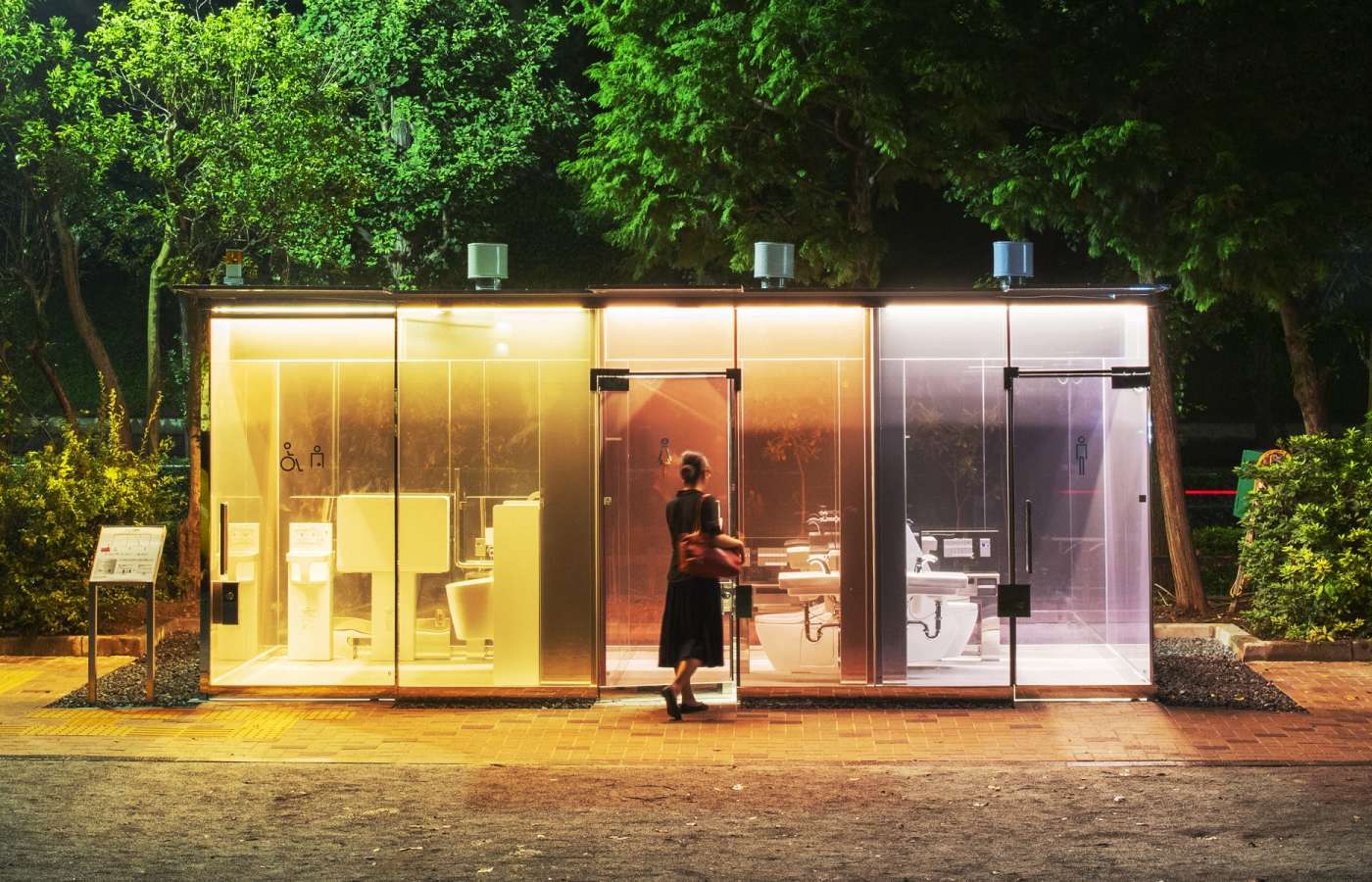
Photo credit: Satoshi Nagare (provided by The Nippon Foundation)
For decades, Japanese toilets and hygienic electronic bidets have been at the global forefront of sanitation technology. In recent years, this phenomenon has gained traction internationally, with more people embracing Japanese toilet features. Japan is also a world leader when it comes to universal design and accessibility in public restrooms, while the age of social media has seen novel lavatory locations and concepts go viral.
Welcome to Japan! Please have a seat
For many new arrivals in Japan, the first dose of culture shock might come when, after a long flight, they decide to pay a visit to the airport restroom. References in popular culture may have led you to expect ultra-hygienic all-singing, all-dancing techno toilets, but without prior experience or thorough revision, the control panel that greets you may still seem a tad bewildering.
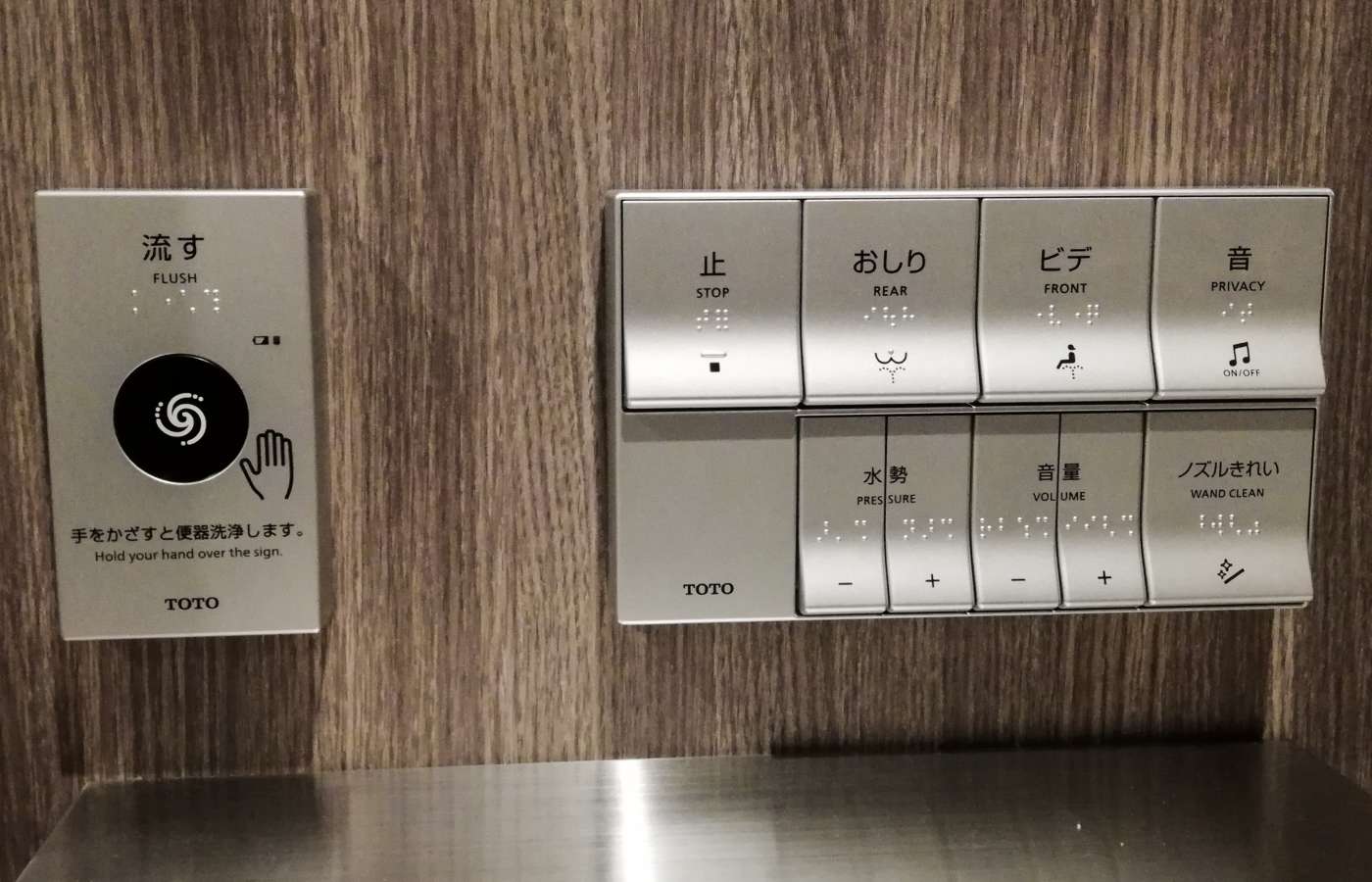
Japanese toilet control panel, with adjustable front and rear bidets and electronic sounds to preserve the user’s modesty.
But fear ye not! Here, at least, the buttons should be clearly labeled in English as well as Japanese, leaving you to navigate your first space-age toilet without too many surprises. These, however, are far from the be-all-and-end-all of Japanese toilets, so take our hand as we descend, Mario-like, down the pipes and get you privy to the facts.
The rise of Japanese toilet technology
Japan’s history of toilet innovation has more austere, even spiritual, beginnings. The nation’s oldest extant toilets (though not still in use) are the “tosu” latrines at Kyoto’s Tofuku-ji temple. Found in a wooden structure near the temple’s Zen meditation hall, these orderly rows of evenly spaced holes were used by monks in the early Muromachi period (1333–1568).
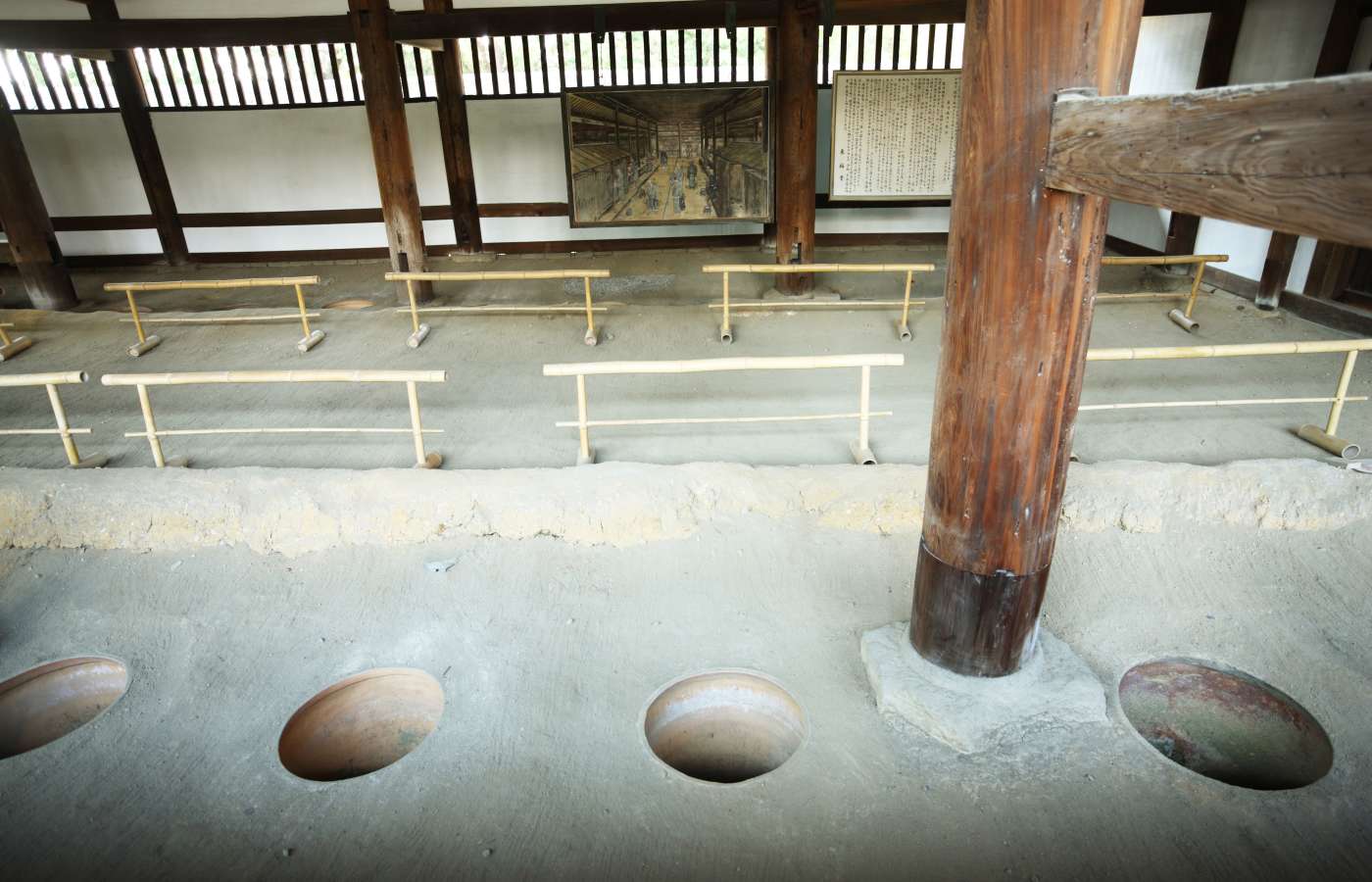
The austere “tosu” at Kyoto’s Tofuku-ji temple are Japan’s oldest extant toilets.
Photo credit: Tomo Yun
Indeed, as initially unsettling as your introduction to Japanese bathroom technology at the airport may have been, it is probably best to also steel yourself for a potential brush with toilets that are ergonomically not too far removed from these historic honey buckets. Though less common nowadays, traditional squat toilets can still be found at some train stations and old-fashioned “izakaya” bars. But despite the daunting appearance, with a little practice this design might even suit squeamish users better than familiar sitting models because, when used correctly, at no point does any part of the anatomy come into direct contact with the commode itself.
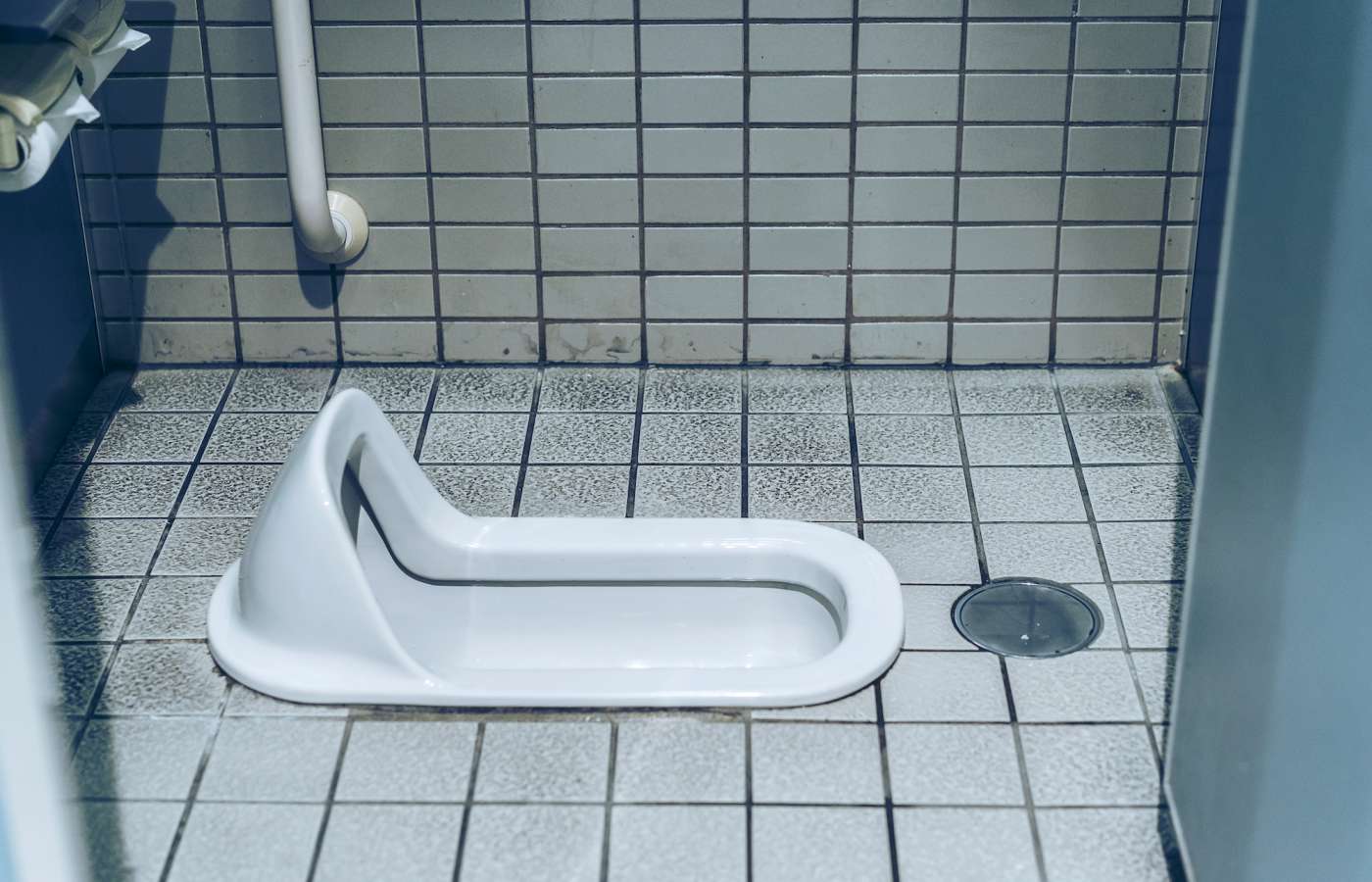
A traditional squat toilet can take some getting used to.
It was in 1980 that manufacturer TOTO first launched its Washlet® toilet seat with a built-in electronic bidet. Since then, they and other major makers like LIXIL and Panasonic have introduced further innovations. As well as bidets for both front and rear with adjustable temperature, water pressure, angle and movement, there are heated seats, different intensities of flush for liquids and solids (“sho” and “dai” respectively), flushes calibrated to ensure even stubborn remnants are swept from the basin, blow dryers, and even electronic flushing sounds triggered at the push of a button, designed to preserve the user’s modesty.
Universal design in public toilets
Accessibility and ease of use are also prime concerns when it comes to public conveniences. Not only does Japan boast widespread availability of hygienic, free-to-use public washrooms, in train stations and other venues, the route to the WCs is often signaled by yellow tactile paving, with additional Braille signage and often a wall-mounted speaker for further guidance on the appropriate direction.

Japan’s abundant accessible bathrooms boast numerous barrier-free design features.
In many stations, parks, etc., there is also a spacious accessible toilet (sometimes in a separate location), with sliding (often automated), wheelchair-friendly doors, wall-mounted grab bars, and multiple emergency buttons/cords (including one near the floor in case of a fall). The Check A Toilet app provides visitors to Japan with fantastic up-to-date info on the nearest accessible bathroom.
Unusual toilet technology and curious restroom locations
While privacy is of course paramount for any toilet, it doesn’t hurt to have a nice view outwards. One public restroom that offers some truly spectacular scenery is in Hario Park, Nagashima, Kagoshima Prefecture, which commands a stunning vista of the Amakusa Archipelago.
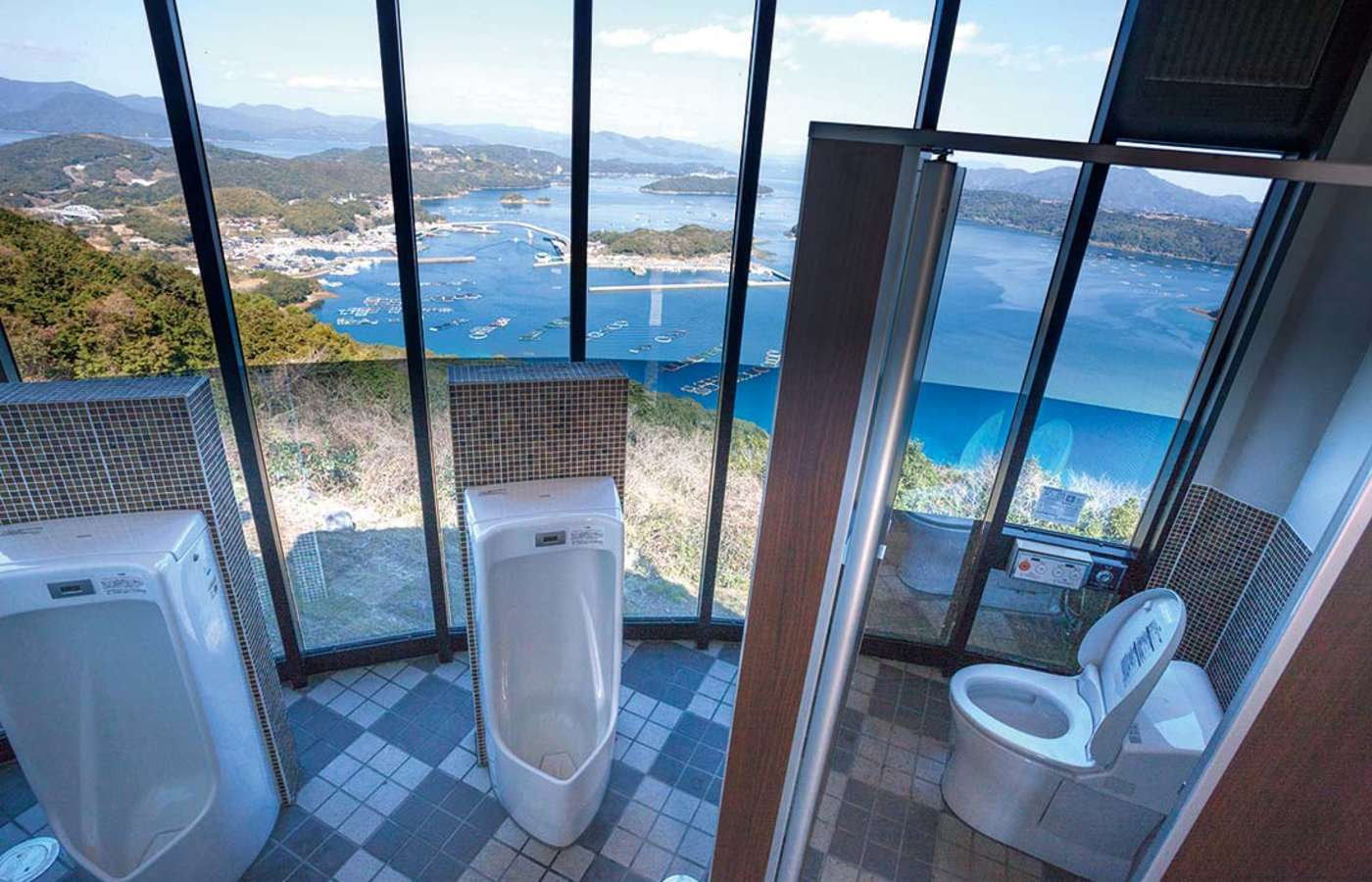
The toilets at Kagoshima’s Hario Park offer one of Japan’s most spectacular lavatory landscapes.
Photo credit: Kagoshima Prefectural Visitor’s Bureau
For those who prefer 360-degree panoramas, how about Toilet in Nature, in Ichihara, Chiba Prefecture? Designed by architect Sou Fujimoto, and touted as the world’s largest public bathroom stall, this single glass-walled women’s cubicle sits amid an oasis of trees and clover, surrounded by a tall fence of cedar logs.

Ichihara’s Toilet in Nature offers a soothing pastoral panorama.
Photo credit: Ichihara City
Another glass-walled (and wheelchair-friendly) restroom is in Tokyo’s Tomigaya neighborhood. Designed by architect Shigeru Ban, this translucency allows users to be sure of cleanliness (and that there is not somebody already inside) before they open the door. Don’t worry though, special technology turns the walls opaque as soon as your cubicle door is locked from within, while the nocturnal dinginess of some public restrooms is dispelled by the way the entire unit lights up through the night. This innovative take on the public convenience is part of an initiative named THE TOKYO TOILET, which aims to ensure that anyone can find and use a bathroom in comfort and confidence, starting with a clutch of creative, accessible WC designs peppered around Tokyo’s Shibuya district.
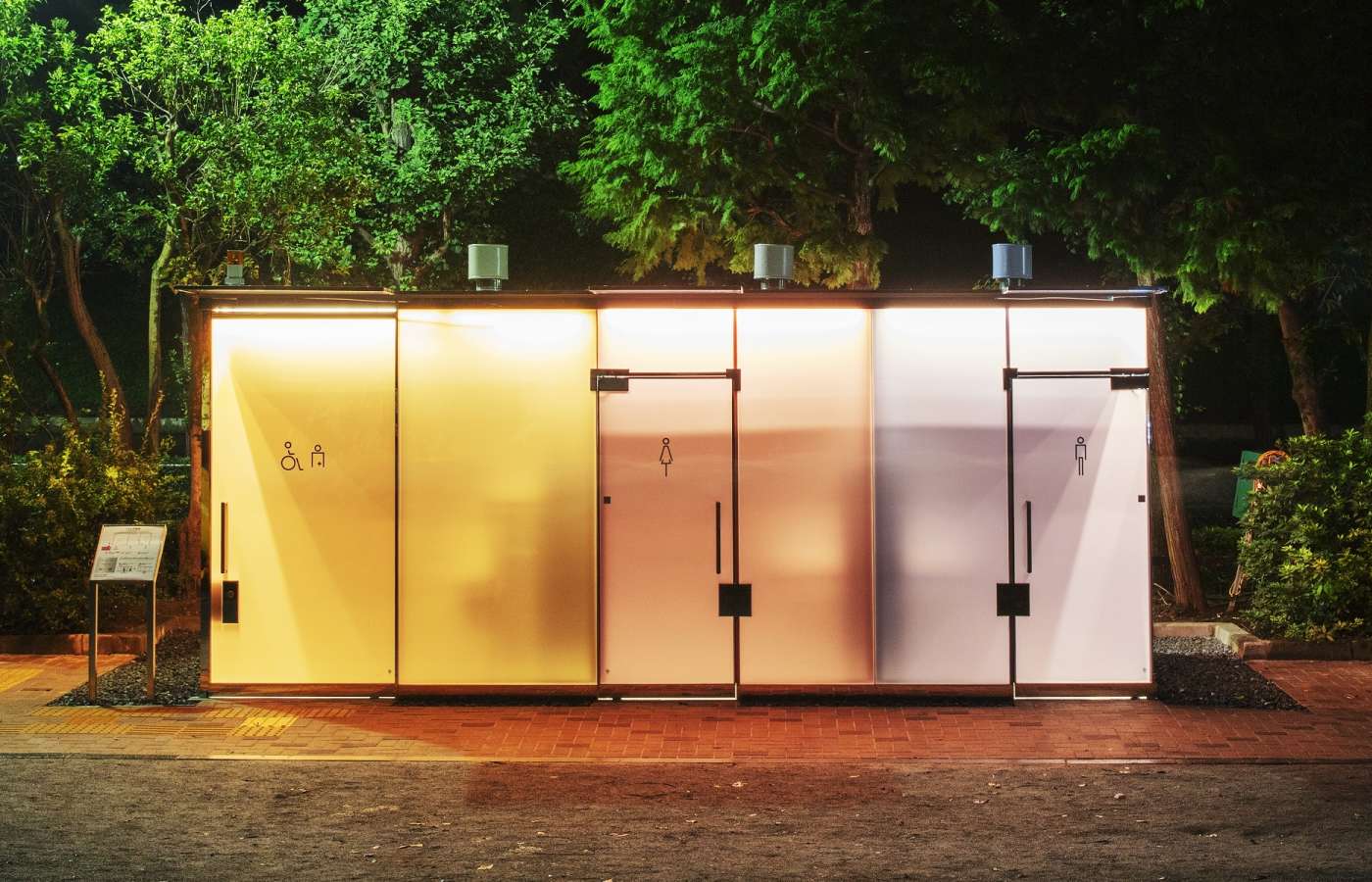
Part of THE TOKYO TOILET Project, these glass-walled restroom cubicles turn opaque when occupied.
Photo credit: Satoshi Nagare (provided by The Nippon Foundation)
A global movement
Japanese toilet innovations are also gaining fans overseas. The longstanding Japanese inclusion of a top-mounted faucet with which to wash the hands as the tank refills after flushing has been hailed as an ingenious way to economize on water.
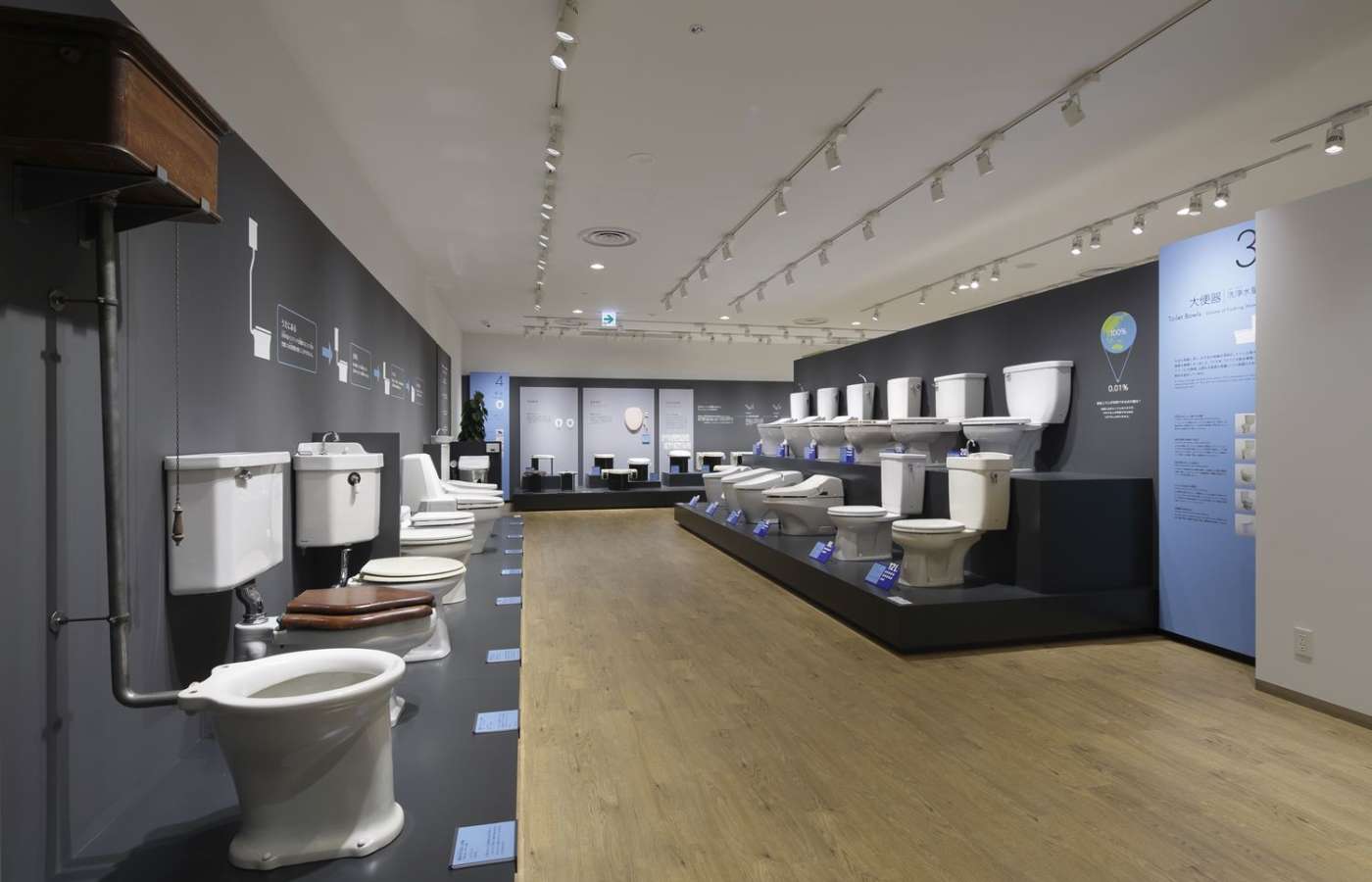
The TOTO Museum gives an unparalleled oversight of Japan’s bathroom hygiene history.
Photo credit: TOTO Museum
Meanwhile, a renewed global focus on hygiene, and even toilet paper shortages due to the pandemic have also put electronic bidets firmly in the spotlight. In 2020 TOTO reported a doubling in its US sales, shipping some 50 million units worldwide.
Visitors to Japan eager to find out more can answer the call of the TOTO museum in Kitakyushu, Fukuoka Prefecture. Here you can get a comprehensive view of the country’s world-leading toilet technology, as well as the sustainability concepts that are prompting a global movement.
-
About the author
Author: David McMahon
Profile: Drawn to Japan from his native UK in 2003 by a love of the country’s underground music, parallel to work as a translator and localization professional David McMahon has written on food, travel, sport, and culture for outlets including the Japan Times, Nippon.com, and NHK World.





















































